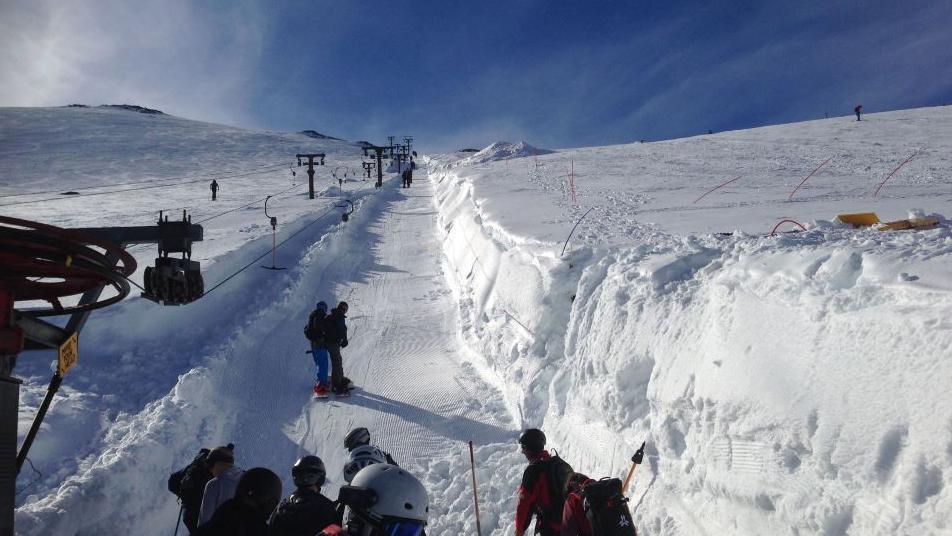Ski resort to keep making artificial snow until May
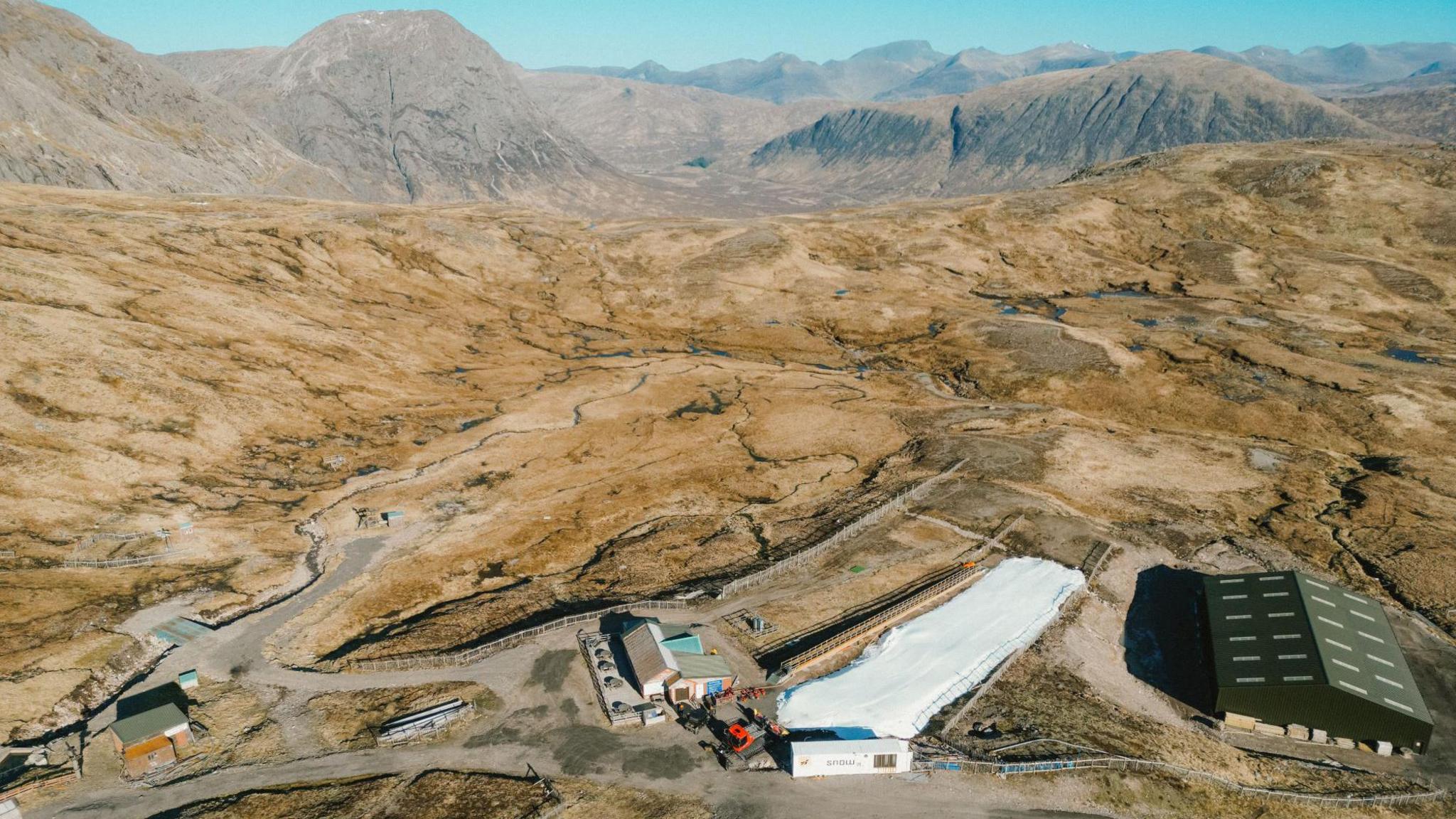
The landscape around Glencoe Mountain's ski slope is empty of natural snow
- Published
One of Scotland's mountain ski resorts is to keep artificially producing snow until May.
Andy Meldrum, managing director of Glencoe Mountain, said it had been a poor winter in terms of natural snowfall.
The site started manufacturing snow in November and has kept it topped up since then. The 80m (262ft) long slope open remains open for sledging and beginner skiing.
Mr Meldrum said: "We've not had a lot of snow, but have done okay. It's certainly not the worst season we've had."
Ski resort's season delayed by poor snow conditions
- Published6 November 2024
Locked-down ski resorts have 'best snow in years'
- Published4 February 2021
The site's snow factory can make 100 cubic metres of snow a day.
Other ski resorts, including Cairngorm Mountain, also use artificially-made snow during the winter season.
Cairngorm managed 100 days of skiing on their slope, before it melted earlier this week. The centre said snow sports could resume if conditions allowed for it.

Glencoe started its snow-making in November and will continue to top up the snow
Mr Meldrum said Glencoe has had one of its poorest seasons in terms of skiers, with about 7,000 so far when usually there would have about 25,000 visitors over the winter season.
But he said numbers of people sledging has been higher than normal - 23,000 so far compared to 15,000.
Mr Meldrum said it had been a drier winter than usual, which led to fewer days when it snowed.
He said: "We have a maritime climate. We've got used to that at Glencoe.
"We have amazing seasons, we have dreadful seasons, good ones and bad ones."
"When it does snow we make sure we are ready to have everything open. When it doesn't snow we try to provide other stuff."
The snow slope is to be open for skiing until late April and sledging until early May.
The Lecht and Glenshee snowsports centres in Aberdeenshire are closed to snowsports due to a lack of snow.
'Winter drier and warmer than normal'
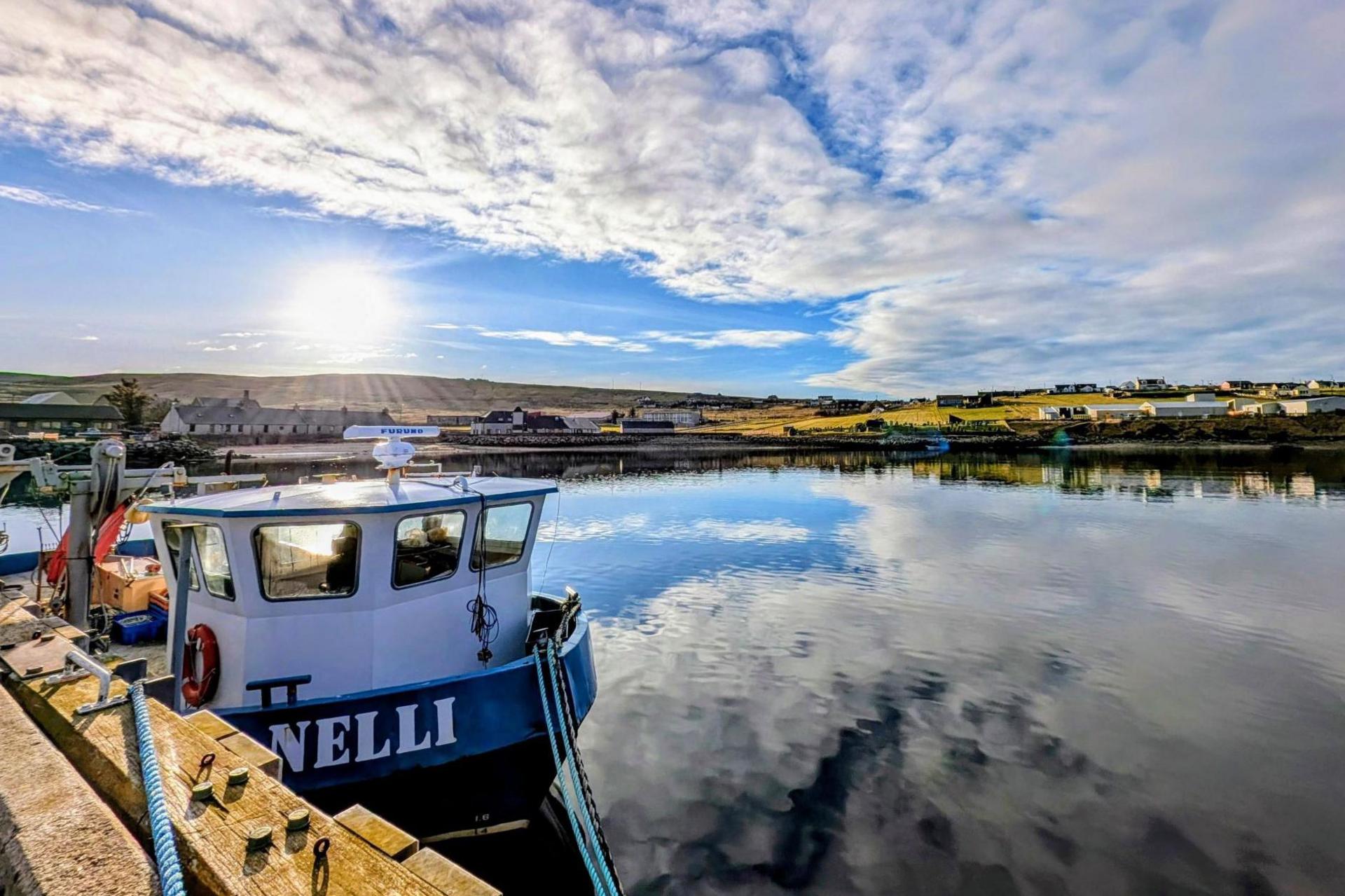
A picture taken in February in Mid Yell, Shetland
We often associate winter as cold, damp and dark with expectations of snow, frost and ice, writes BBC Scotland Weather's Christopher Blanchett.
But like any of our seasons, winter has natural variations and we can't always rely on it to fully support our winter sports industry.
Meteorologists class winter as December, January and February.
Overall, the winter just gone was drier and warmer than normal - according to provisional statistics from the Met Office.
The mean temperature for the season in Scotland was 3.7C, which is 0.7C higher than normal.
The average rainfall was 425mm (16.7in), which is 86% of the long-term average. However, as with all statistics there were some distinct regional and monthly variations.
December was wetter than normal but also much warmer.
The mean temperature was 2.1C higher than average, making it the seventh warmest December in Scotland on record by that metric, in a series that dates back to 1884.
Despite a third more rain than normal, which in theory should mean more snow at higher elevations, those higher temperatures may have scuppered that potential benefit.
There were cold spells during the winter, these were often followed by a very mild south-south-westerly, with freezing levels rising above the tops and a lot of the snow melting.
With changing climate trends in our warming world, future winters may make it even harder for the industry to have a good season.
- Published5 June 2024
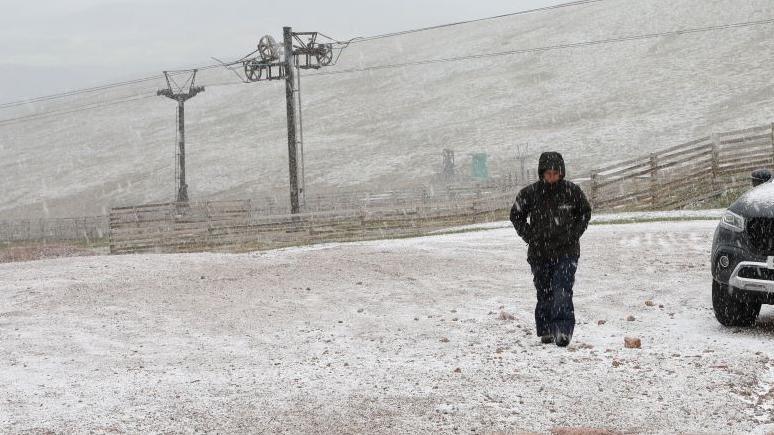
- Published30 April 2024
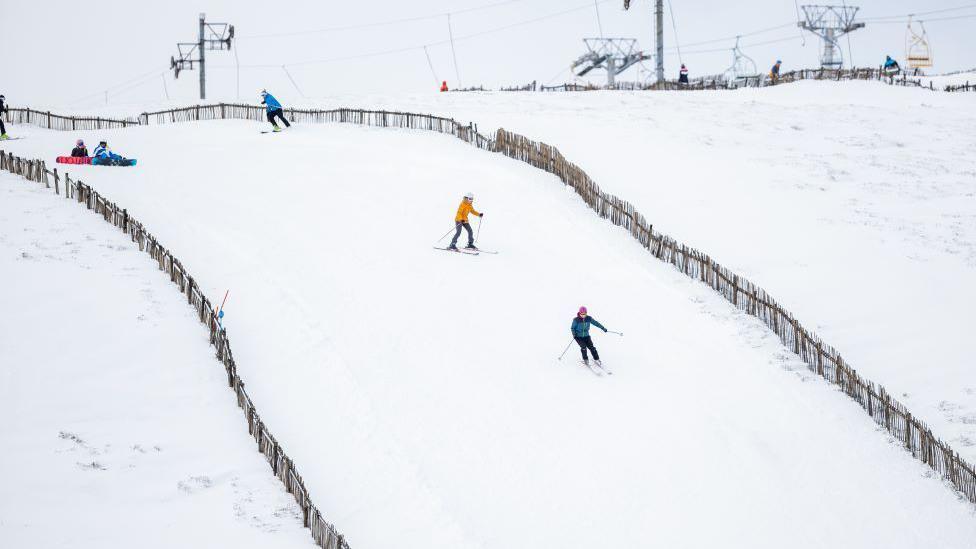
- Published22 December 2023
